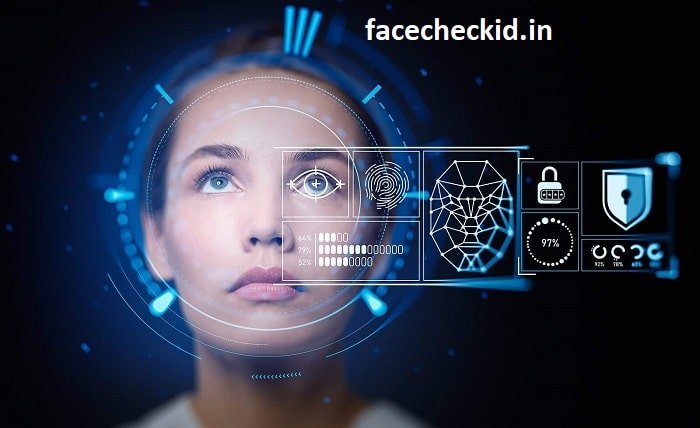Face Search Engine Reverse Image Search: Unlocking New Possibilities

In the digital age, “face search engine reverse image search” has emerged as a groundbreaking technology, revolutionizing the way we search for and identify individuals in images. By leveraging advanced algorithms and artificial intelligence, face search engine reverse image search enables users to find information and related images of a person using just their photo. This blog post will delve into the intricacies of face search engine reverse image search, exploring its applications, benefits, challenges, and future prospects.
Face Search Engine Reverse Image Search
Face search engine reverse image search is a technology that uses facial recognition algorithms to identify and retrieve images of individuals from a vast database. Unlike traditional text-based search engines, face search engine reverse image search relies on visual data to perform searches. By analyzing facial features, this technology can match a given image with other images of the same person across the internet, providing users with relevant information and connections.
Applications in Law Enforcement
One of the most significant applications of face search engine reverse image search is in law enforcement. Police and security agencies use this technology to identify suspects, locate missing persons, and solve crimes. By uploading a photo of a suspect, investigators can quickly find matches in databases, social media, and other online sources. Face search engine reverse image search enhances the efficiency and accuracy of criminal investigations, making it a valuable tool for law enforcement.
Enhancing Social Media and Networking
Face search engine reverse image search is also making waves in the realm of social media and networking. Users can utilize this technology to find friends, verify identities, and explore social connections. For instance, by uploading a photo, users can discover the social media profiles of individuals, enabling them to connect with old friends or verify the authenticity of online acquaintances. This application of face search engine reverse image search fosters deeper and more meaningful connections in the digital space.
Revolutionizing Online Dating
In the world of online dating, face search engine reverse image search offers a unique solution for verifying the identities of potential matches. Users can upload a photo of a person they are interested in and find other images of them online, ensuring that their profiles are genuine. This helps prevent catfishing and other deceptive practices, making online dating safer and more reliable. Face search engine reverse image search thus plays a crucial role in building trust in digital relationships.
Improving E-commerce and Retail
Face search engine reverse image search is transforming the e-commerce and retail sectors by enabling visual product searches. Shoppers can upload images of products they are interested in and find similar items available for purchase online. This technology streamlines the shopping experience, making it easier for consumers to find exactly what they are looking for. Retailers can also use face search engine reverse image search to analyze customer preferences and optimize their product offerings.
Enhancing Security and Access Control
In security and access control systems, face search engine reverse image search provides an additional layer of verification. By comparing the faces of individuals with their registered photos, this technology ensures that only authorized personnel gain access to secure areas. This application is particularly useful in workplaces, airports, and other high-security environments. Face search engine reverse image search enhances the effectiveness of security protocols, safeguarding sensitive information and assets.
Ethical Considerations and Privacy Concerns
While face search engine reverse image search offers numerous benefits, it also raises significant ethical considerations and privacy concerns. The ability to identify individuals from their photos can lead to potential misuse, such as stalking or harassment. Ensuring the ethical use of this technology requires robust legal frameworks and guidelines. Additionally, users must be aware of how their images are being used and have control over their digital identities. Addressing these concerns is crucial for the responsible deployment of face search engine reverse image search.
Addressing Data Privacy Issues
Data privacy is a critical concern in the implementation of face search engine reverse image search. To address this issue, companies must adopt robust data protection measures and comply with relevant regulations. Ensuring that users’ images are stored securely and that their data is anonymized can help mitigate privacy risks. Transparency in data usage and obtaining explicit consent from users are essential practices to build trust and ensure the responsible use of face search engine reverse image search.
Overcoming Bias in Facial Recognition
Bias in facial recognition algorithms can lead to unfair outcomes and discrimination. It is essential to develop face search engine reverse image search models that are trained on diverse and representative datasets to minimize bias. Regular audits and evaluations of AI systems can help identify and rectify biases. Additionally, involving a diverse team of developers and stakeholders in the development process can contribute to the creation of fair and unbiased face search engine reverse image search systems.
The Future of Face Search Engine Reverse Image Search
The future of face search engine reverse image search is promising, with continuous advancements enhancing its capabilities and expanding its applications. Researchers and developers are working on improving the accuracy and efficiency of facial recognition algorithms. Integration with other emerging technologies, such as augmented reality (AR) and virtual reality (VR), will further enhance the potential of face search engine reverse image search. As this technology evolves, it will undoubtedly find new and innovative uses across various industries, driving digital transformation and growth.
Conclusion
Face search engine reverse image search is revolutionizing the landscape of digital interactions, offering innovative solutions that enhance security, streamline processes, and foster connections. However, it also presents ethical and privacy challenges that must be carefully navigated. By addressing these concerns and fostering responsible use, we can harness the full potential of face search engine reverse image search to create a smarter and more efficient future. As we move forward, the continued development and regulation of this technology will shape its role in our digital world.
FAQ
1. What is face search engine reverse image search?
Face search engine reverse image search is a technology that uses facial recognition algorithms to identify and retrieve images of individuals from a vast database by analyzing and matching facial features.
2. How does face search engine reverse image search benefit law enforcement?
Face search engine reverse image search benefits law enforcement by enabling police and security agencies to identify suspects, locate missing persons, and solve crimes more efficiently and accurately.
3. What are the applications of face search engine reverse image search in social media?
Applications of face search engine reverse image search in social media include finding friends, verifying identities, and exploring social connections by discovering social media profiles from uploaded photos.
4. What are the ethical concerns related to face search engine reverse image search?
Ethical concerns related to face search engine reverse image search include potential misuse, such as stalking or harassment, and privacy issues regarding the storage and usage of individuals’ images.
5. What is the future potential of face search engine reverse image search?
The future potential of face search engine reverse image search is promising, with advancements improving its accuracy and efficiency, and integration with other technologies expanding its applications across various industries.





